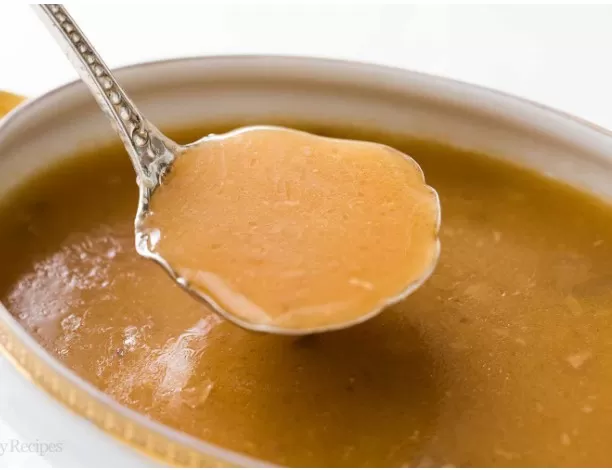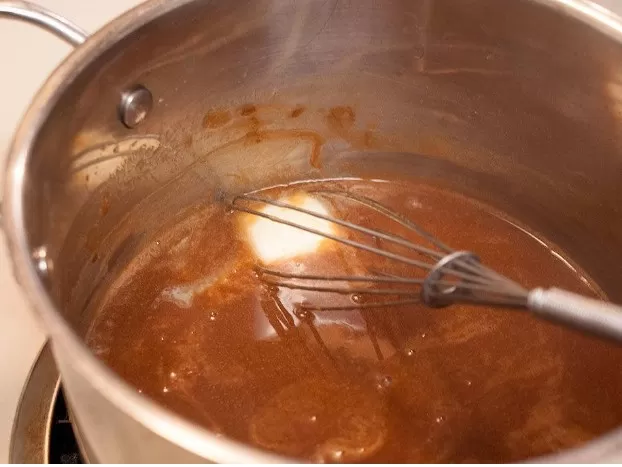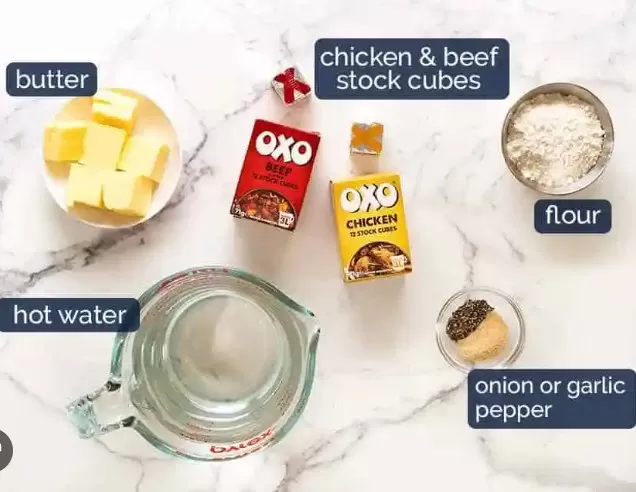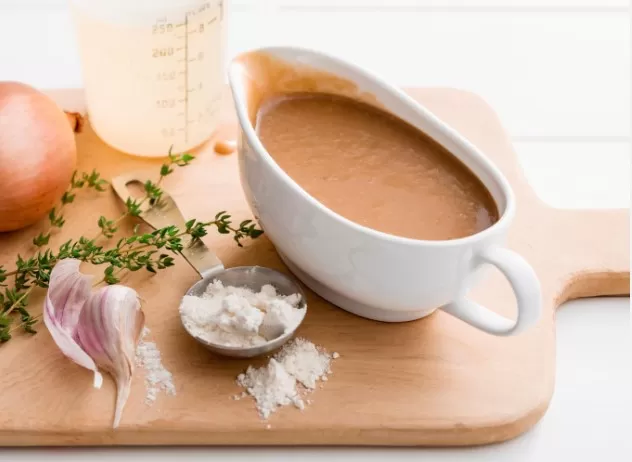The Perfect Homemade Gravy: Mastering the BasicsA Savory Essential: Mastering Homemade Gravy from Scratch
Gravy adds a delightful touch to any dinner table, not just during Thanksgiving. The good news is that making delicious gravy from scratch only requires a handful of simple ingredients. Whether you’re crafting a classic brown gravy for beef or turkey or indulging in the Southern-style white gravy traditionally poured over fluffy biscuits, all it takes is following a few straightforward steps.
The beauty of gravy lies in its versatility, offering a wide range of flavors and colors to complement various dishes. When prepared with care, it becomes a delicious and essential finishing touch for roasts and other culinary delights.
Exploring the Essence of Gravy: A Flavorful Sauce
Gravy shares similarities with a pan sauce: it is created from the flavorful drippings of your cooked dish, often using meat fat.
It is thickened with ingredients like flour or cornstarch and enriched with various liquids, commonly broth, to enhance its body and flavor. The process of making gravy is relatively quick, resulting in a luscious, glossy sauce that adds both elegance and taste to any dish it graces.
The Essential Role of Pan Drippings in Flavorful Gravy

Regardless of the type of gravy you’re making, the key lies in using the right ingredients.
According to Nora Singley, a food stylist, culinary producer, and author of Noodle: A Recipe Newsletter, the foundation of a good gravy is good drippings. She emphasizes that high-quality drippings, which are nicely browned, impart a savory and rich flavor to the gravy.
Drippings refer to the seasoned juices that remain in the roasting pan, known as fond in French cuisine. When working with a fatty piece of meat or poultry, you’ll yield more drippings during the roasting process, which significantly contributes to the final product, explains Singley.
Barrett Washburne, a food stylist with extensive experience in Thanksgiving photo and video shoots, agrees that the most crucial ingredient for exceptional gravy is the one already present in the pan.
He emphasizes, “I can’t stress enough the importance of using the concentrated flavor found at the bottom of the pan. That is the essence you need for a truly flavorful gravy.
“.
Savoring the Delights of Vegetarian Gravy
While it’s true that meat drippings are often essential for delicious gravy, there is still a delightful option for vegetarian gravy.
Barrett Washburne suggests creating a flavorful vegetarian gravy by using high-quality vegetable stock and butter. Alternatively, for a completely vegan version, you can opt for plant-based butter. With these substitutions, you can enjoy a delicious vegetarian or vegan gravy that doesn’t compromise on taste.
Exploring the Flavors of Meat Gravy

“While it’s true that meat drippings are often essential for delicious gravy, there is still a delightful option for vegetarian gravy.
Barrett Washburne suggests creating a flavorful vegetarian gravy by using high-quality vegetable stock and butter. Alternatively, for a completely vegan version, you can opt for plant-based butter.
With these substitutions, you can enjoy a delicious vegetarian or vegan gravy that doesn’t compromise on taste. “.
Here are the four steps to make gravy from scratch

Gather the Ingredients: You’ll need pan drippings (or an alternative flavor base), a thickening agent (such as flour or cornstarch), liquid (such as broth or stock), and seasonings (such as salt, pepper, and herbs) to enhance the flavor.
Prepare the Roux: In a separate saucepan, melt butter or heat oil over medium heat.
Gradually whisk in the thickening agent (flour or cornstarch) until it forms a smooth paste called a roux. Cook the roux for a few minutes to eliminate the raw flour taste, stirring constantly.
Incorporate the Liquid: Slowly add the liquid (broth or stock) to the roux, whisking continuously to prevent lumps.
Bring the mixture to a gentle simmer, allowing it to thicken as it cooks. Stir occasionally to ensure even consistency.
Season and Adjust: Taste the gravy and season it with salt, pepper, herbs, or any additional desired seasonings.
If needed, adjust the thickness by adding more liquid to thin it out or simmering longer to reduce and thicken it further.
Once the gravy reaches your desired consistency and flavor, remove it from heat and serve it hot over your favorite dishes.
To Elevate Your Gravy to the Next Level

Harness the Freshness of Herbs: Fresh herbs can add a burst of flavor and elevate your gravy to restaurant-quality.
Nora Singley recommends finishing your gravy with a combination of fresh thyme, parsley, chives, and even dill. For an extra touch, a small amount of finely chopped fresh rosemary can provide a delightful twist.
Embrace the Power of MSG: Dispelling the myth that MSG is harmful, Barrett Washburne suggests incorporating a sprinkle of MSG (monosodium glutamate) into your gravy for enhanced flavor.
MSG can amplify the savory notes and make your gravy taste more robust and satisfying.
By incorporating these additional ingredients, you can take your homemade gravy to new heights, delighting your taste buds with an extra layer of flavor and complexity.
*The information is for reference only.